Contrary to tradition, Memorial Day will be held on 29 August this year with events at 70 national and historical memorial sites around the country, writes the MTI.
Memorial Day is traditionally held on the second Saturday of May but was postponed this year to the end of August, the anniversary of the Battle of Mohács, due to the coronavirus epidemic, noted the director of the National Heritage Institute at a series of press conferences in Budapest on Friday. Katalin Radnainé Fogarasi added that all events will follow the epidemic-related regulation in effect at the time. For the first time this year, a Memorials Award will be presented, and all participating memorials will organise family-friendly events, a significant portion of which will be free.
The event would like to draw attention to places that are especially important in Hungarian history and culture. Admission to the memorial sites is discounted or free of charge. Act LXIV of 2001 on the Protection of Cultural Heritage lists 17 national memorial sites and 49 historical memorial sites nationwide. Their uniform designation is provided by the National Heritage Institute. The steles set up not only made the memorial sites uniform and easily recognisable but also informed visitors about their significance.
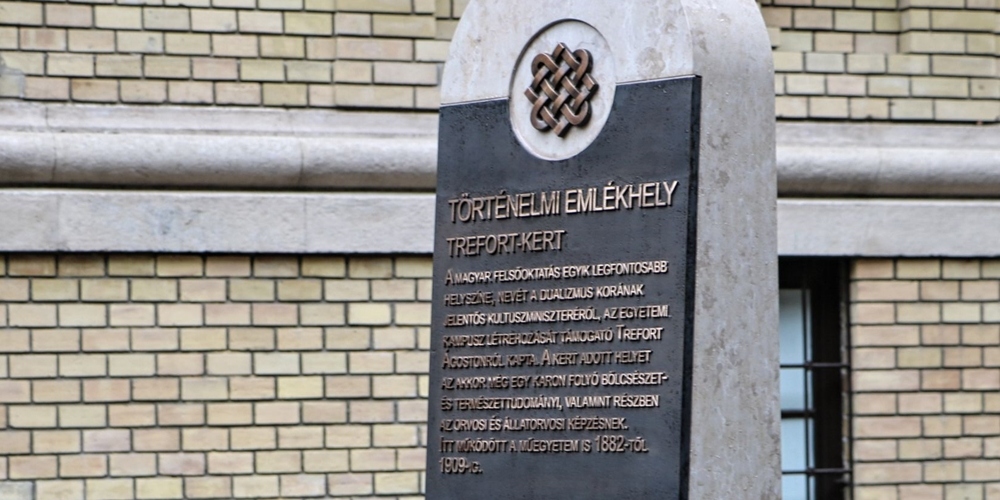
Stele in the Trefort Garden (Photo: Júlia Kozics/pestbuda.hu)
These are important places in Hungarian history and often important architectural works, which are significant not only as monuments but also because of their outstanding historical roles. These points, as symbolic and real spaces of memory, recall the fateful, outstanding, but also tragic moments that have become Hungarian history.
An important goal of the day is to allow as many people as possible to learn about these "touristic pilgrimage sites" and discover why a stele stands at 69 points across the country and what connects these sites.
This year, walks and concerts in the Parliament and Kossuth Square await those interested, the main building of Ludovika and the renovated riding school will be open to the public, and the institutions of the Buda Castle District will also take part in Memorial Day. NÖRI itself is also organising events at the National Cemetery on Fiumei Road, the Rákoskeresztúr New Public Cemetery and the Jewish Cemetery on Salgótarjáni Street.
Győr, Máriapócs and Mátraverebély, which were declared national monuments this year, will also join the series of events. To commemorate the anniversary of the Battle of Mohács, the Mohács National Memorial is creating exhibitions and lectures about archaeology. The opening of Memorial Day will be held at the Pákozd National Memorial, one of the most famous battlefields of the 1848-49 War of Independence. On 29 August exhibitions, and interactive sessions will draw attention to the importance of national defence and the preservation of peace.
Memorial sites:
Corvin Alley
Corvin Alley in the 8th District of Budapest, near the corner of Ferenc Boulevard and Üllői Road, is an emblematic site of the 1956 revolution and the war of independence. It was one of the centres of resistance and longest-fighting pockets against the forces of the Stalinist dictatorship and Soviet occupation. While fighting the overwhelming Soviet army, many revolutionaries sacrificed their lives for Hungarian freedom.

Statue of the revolutionary in Corvin Alley (Source: Wikipedia)
60 Andrássy Avenue
A symbol of political terror, where many were detained, tortured and murdered during the Arrow Cross and the Communist dictatorships. The building was a venue of the Arrow Cross rallies from the late 1930s, and then the centre of their party called the House of Loyalty. It was taken over by the communist-led political police in 1945 and later became the headquarters of the ÁVO and then of the ÁVH (state security agencies).
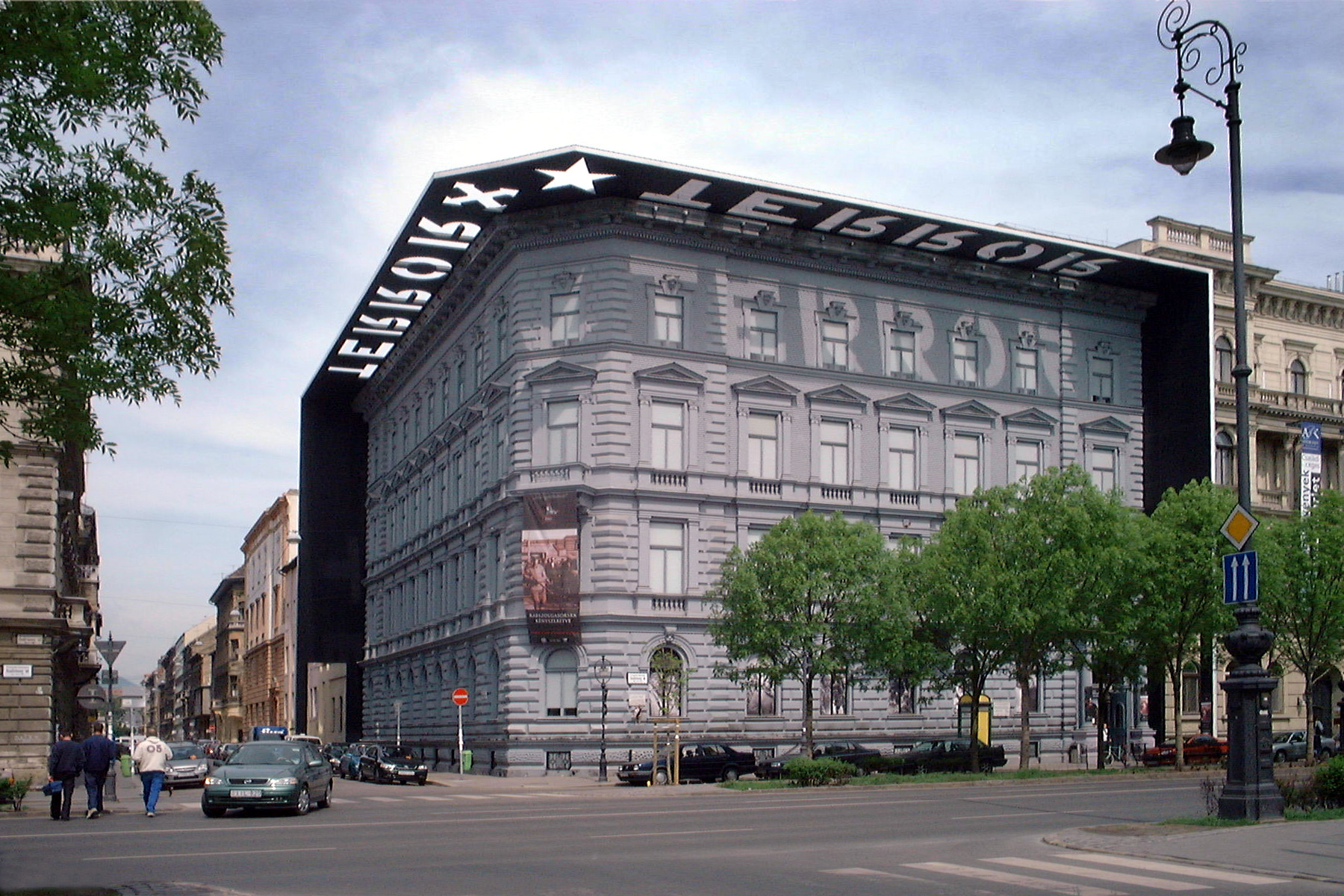
The House of Terror Museum operates at 60 Andrássy Avenue (Source: Wikipedia)
Eötvös József Collegium
Eötvös József Collegium is the specialized college of the faculties of humanities, informatics, social sciences and natural sciences of Eötvös Loránd University in Budapest. The institution was founded by the physicist, rector and minister Loránd Eötvös in 1895 based on the model of the École Normale Supérieure, and today operates as a specialist college within Eötvös Loránd University.
The first building of the Collegium was in Csestag Street in Pest (today Gönczy Pál Street), then in 1910, the Ménesi Road building designed by Ignác Alpár was built, which is still home to the institution. Since its foundation, it has been dedicated to the training of “academic teachers” and replenishing Hungarian intellectual life. Many excellent scientists studied within its walls.
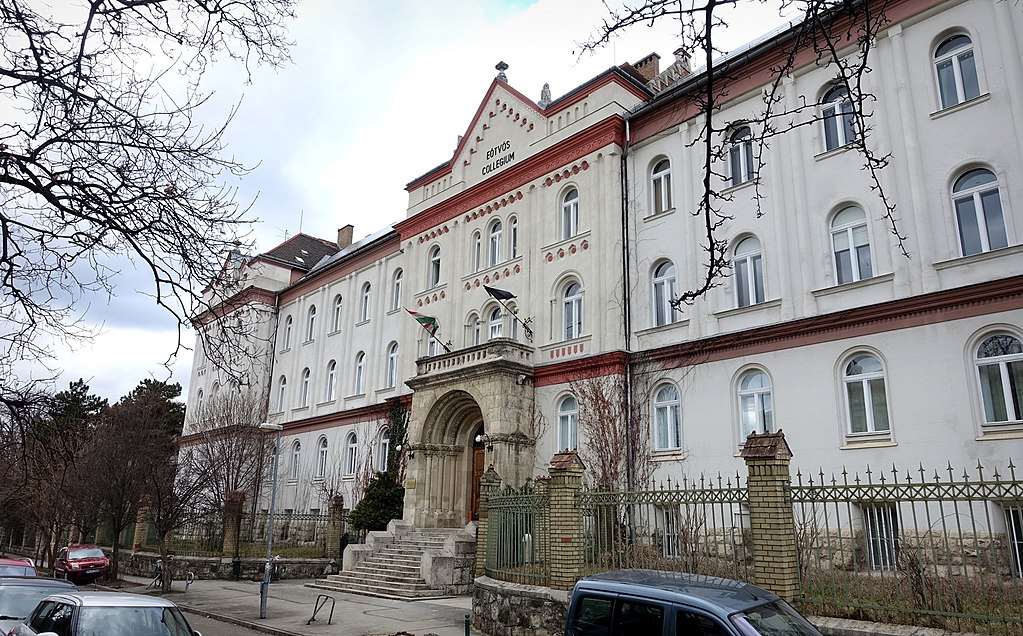
Eötvös József Collegium building on Ménesi Road (Source: Wikipedia)
Ludovika Academy
The Ludovika Academy of the Royal Hungarian Defense Forces, in short, Ludovika, was the institution that offered the highest level of training in the Hungarian military before 1945. Based on the plans of Mihály Pollack, the classicist-style building completed between 1830 and 1836 served as the scene of Hungarian military officer training from 1872. After 1945, the building housed an officer training and higher education institution and museum.
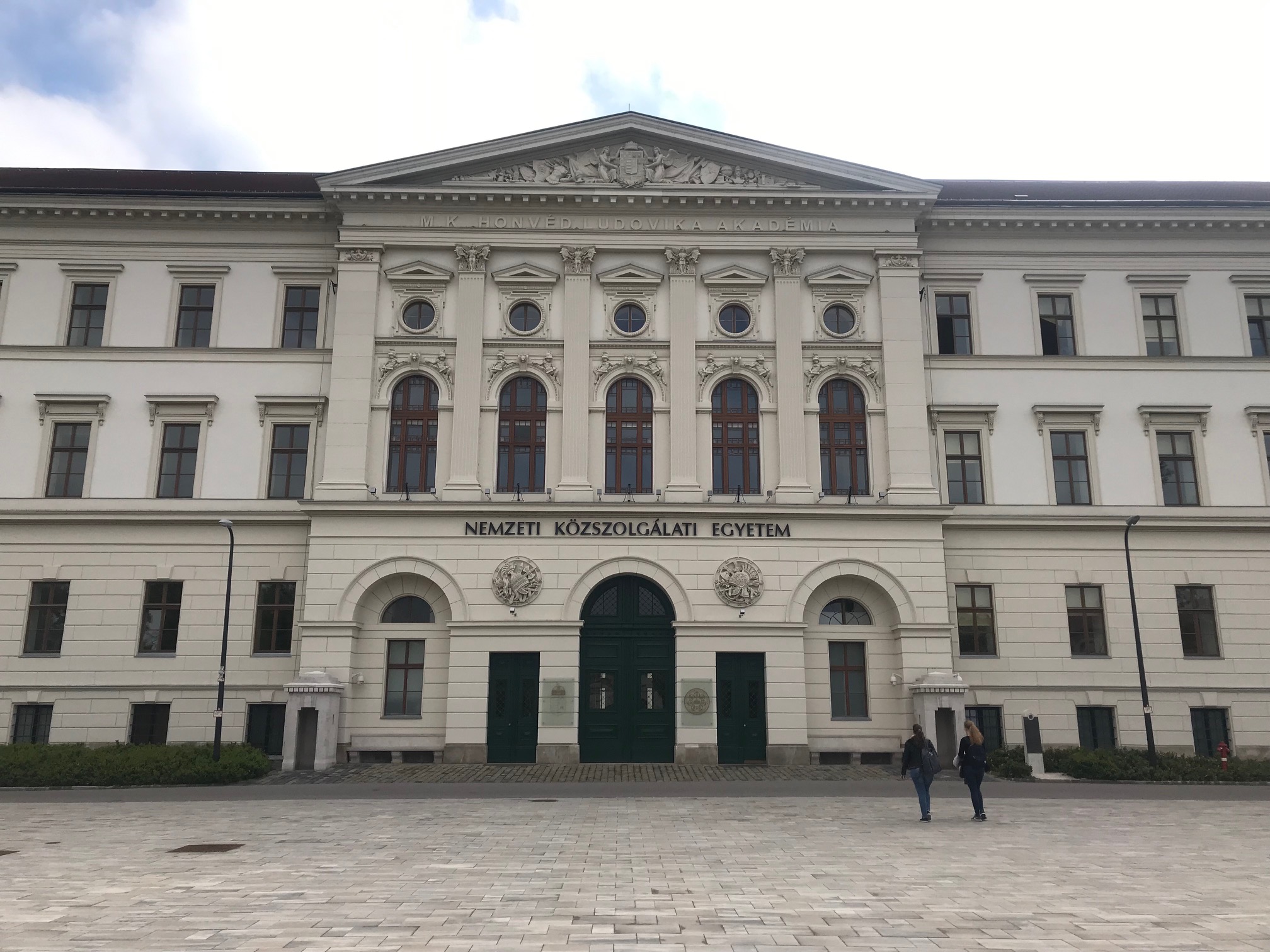
The Ludovika Academy (Photo: pestbuda.hu)
Technical University
The Budapest University of Technology and Economics (BME) is one of the most prestigious technical universities in Central Europe and Hungary. Through its predecessor, the 18th-century Institutum Geometrico-Hydrotechnicum, it is the cradle of Hungarian technical higher education. The central building of the university was designed by Alajos Hauszmann in 1909.
As a result of a student assembly held on 22 October 1956, on the university’s historic campus, demands against the communist political system became more well known. The demonstration that started here became the opening of the revolution in the capital on 23 October.
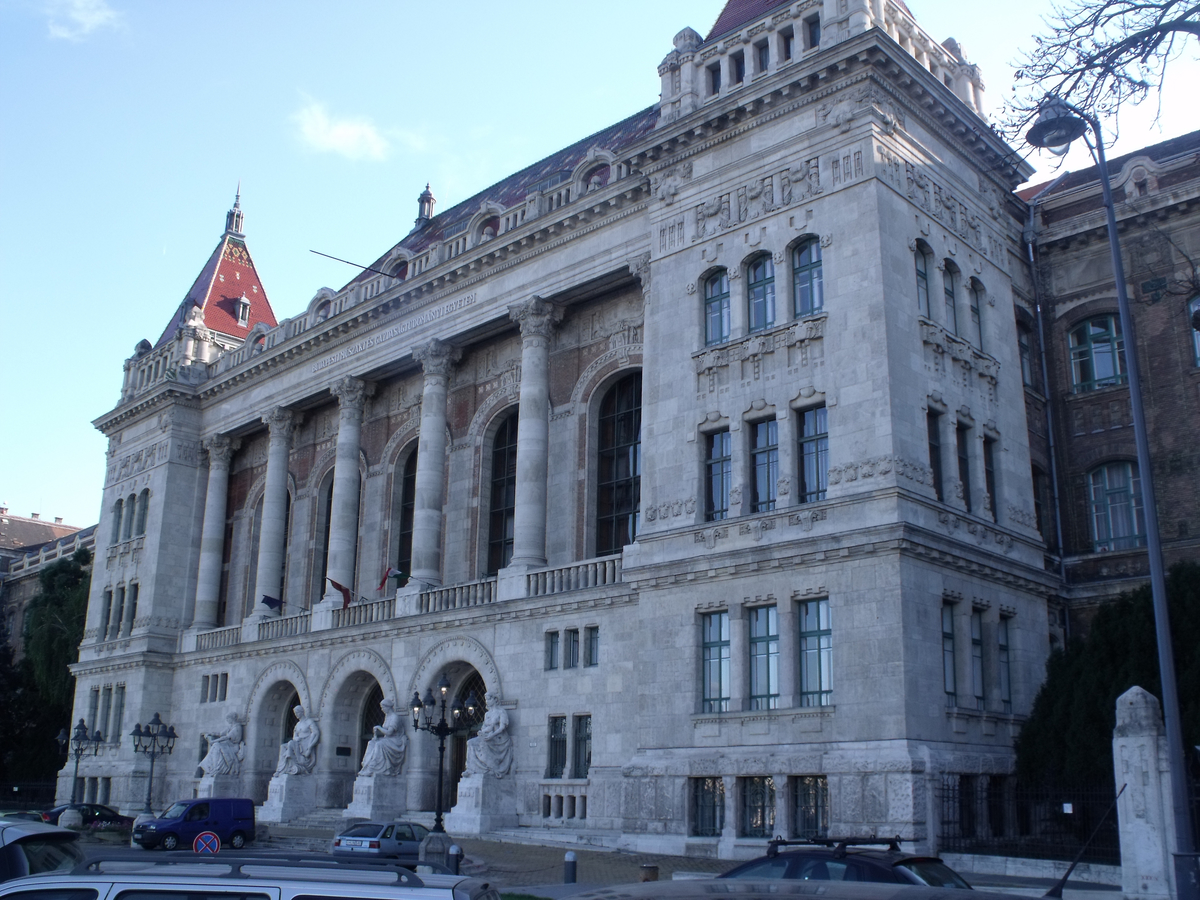
The central building of the Budapest University of Technology and Economics designed by Alajos Hauszmann in 2019 (Photo: pestbuda.hu)
Trefort Garden
The Trefort Garden Campus, home to the Faculty of Humanities, is located in the 8th District at 6–8 Museum Boulevard. Based on the plans of Imre Steindl and Antal Wéber, built between 1880 and 1883, the building in the Neo-Renaissance style includes two inner courtyards.
The Trefort Garden is one of the most important venues of modern Hungarian higher education, named after Minister of Culture Ágoston Trefort, who supported the establishment of the university campus. The garden housed a faculty of humanities and natural sciences at the time, as well as a small part of medical and veterinary training, and for four decades the Technical University also operated here.
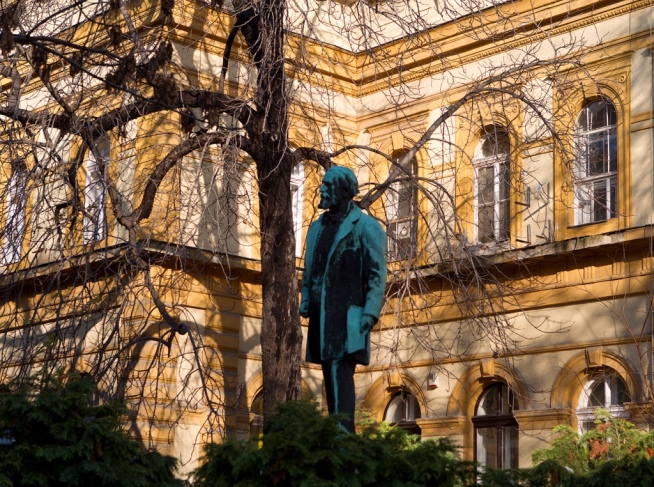
Trefort Garden (Source: elte.hu)
National monuments
The Parliament and its surroundings
The Parliament is one of the most famous public buildings in the capital, the seat of the Hungarian National Assembly and some of its institutions. It is located in the 5th District of Budapest, on the banks of the Danube, in Kossuth Lajos Square. The building was designed by Imre Steindl in the spirit of historic eclecticism and was completed in 1902.
Kossuth Square in Budapest is an important place in Hungarian history, which the National Assembly designated the only Special National Memorial on 1 January 1012. Most state commemorations and celebrations are held here. The space is a frequent venue for political mass events, as Kossuth Square is identified with the Hungarian state in the symbolism of Hungarian politics due to its importance in the legislature.
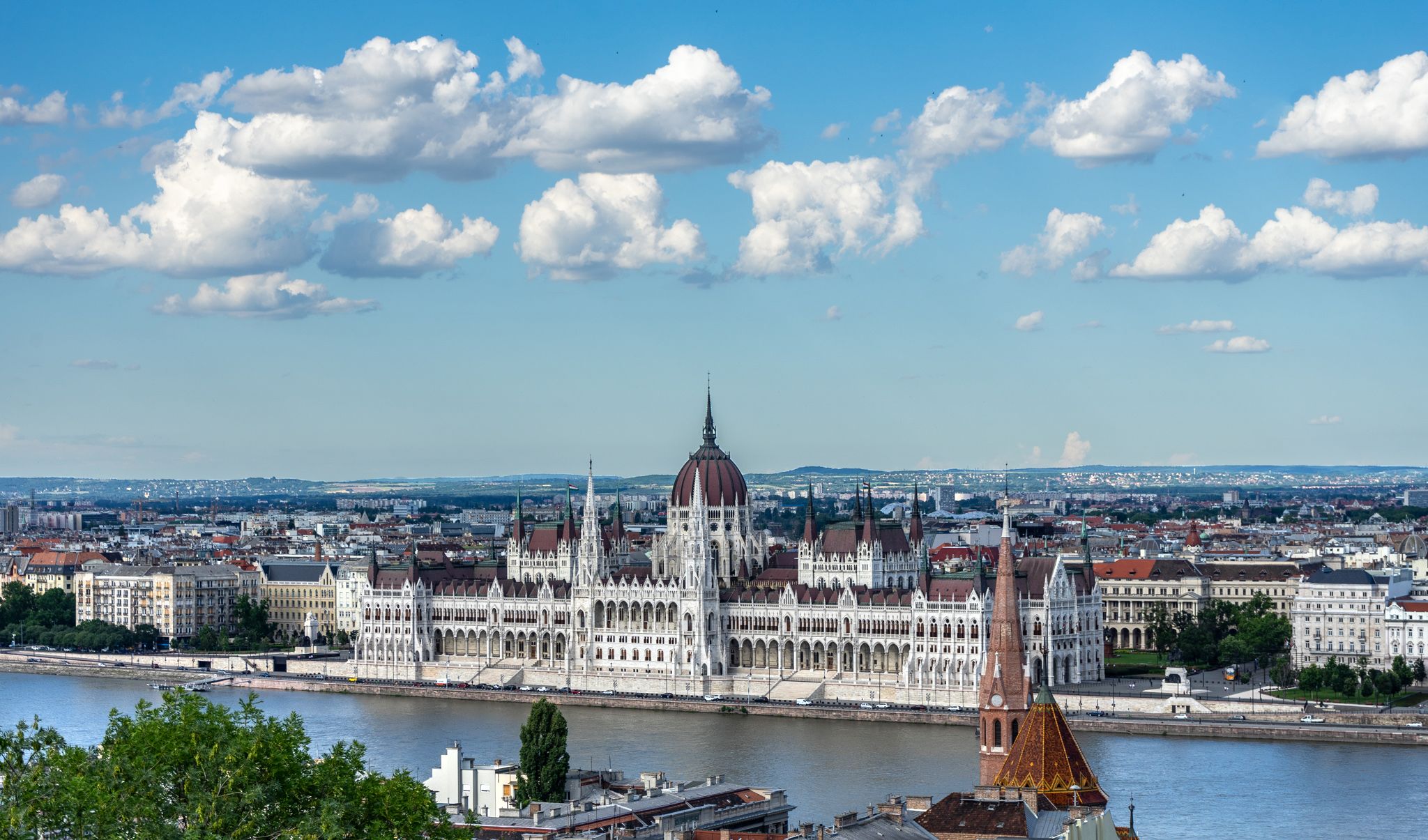
The Parliament from Kossuth Square (Photo: Balázs Both/pestbuda.hu)
Fiumei Road Cemetery
The idea of a graveyard created for the greats of the nation was raised by István Széchenyi. The graveyard opened as a public cemetery in Pest in the middle of the 19th century, and by the end of the century, it had become the most prestigious place of memorial culture in Hungary. The mausoleum of Lajos Batthyány, Ferenc Deák and Lajos Kossuth, can be found in the grounds. The last of which is the largest tomb in Hungary.
More than one and a half thousand outstanding figures of Hungarian history and culture are buried here. A significant number of the graves are also important works of art created by famous sculptors. The cemetery park is also known for its rich flora and fauna.
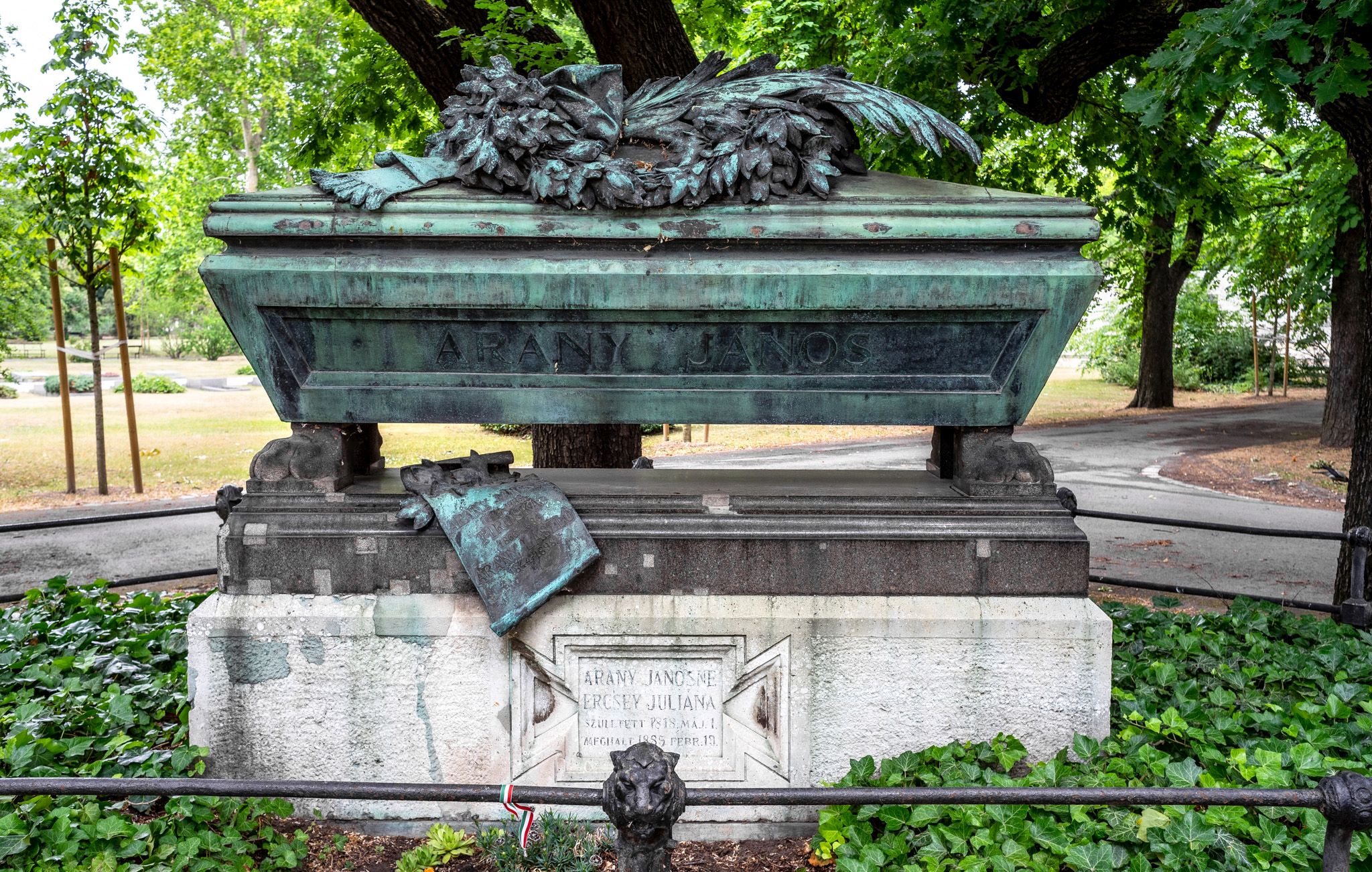
Tomb of János Arany in the garden on Fiumei Road (Photo: Balázs Both/pestbuda.hu)
Heroes' Square
The present shape of the square at the end of Andrássy Avenue began to take shape on the thousandth anniversary of the Hungarian conquest of the Carpathian Basin in 1896. It was then that the Art Gallery was opened, and a law was passed on the construction of the Museum of Fine Arts and the Millennium Monument. The work was completed in 1929. The sculpture gallery of the most important rulers of the thousand years and the group of sculptures of the seven conquering leaders, in front of it the symbolic tomb of the Hungarian heroic dead.
The square evokes the entire history of the nation and the country, not only reminiscent of the victims of wars but also of the creators and creations of the times of peace, the timeless values of Hungarian culture. Heroes' Square and Andrássy Avenue are part of the world heritage.
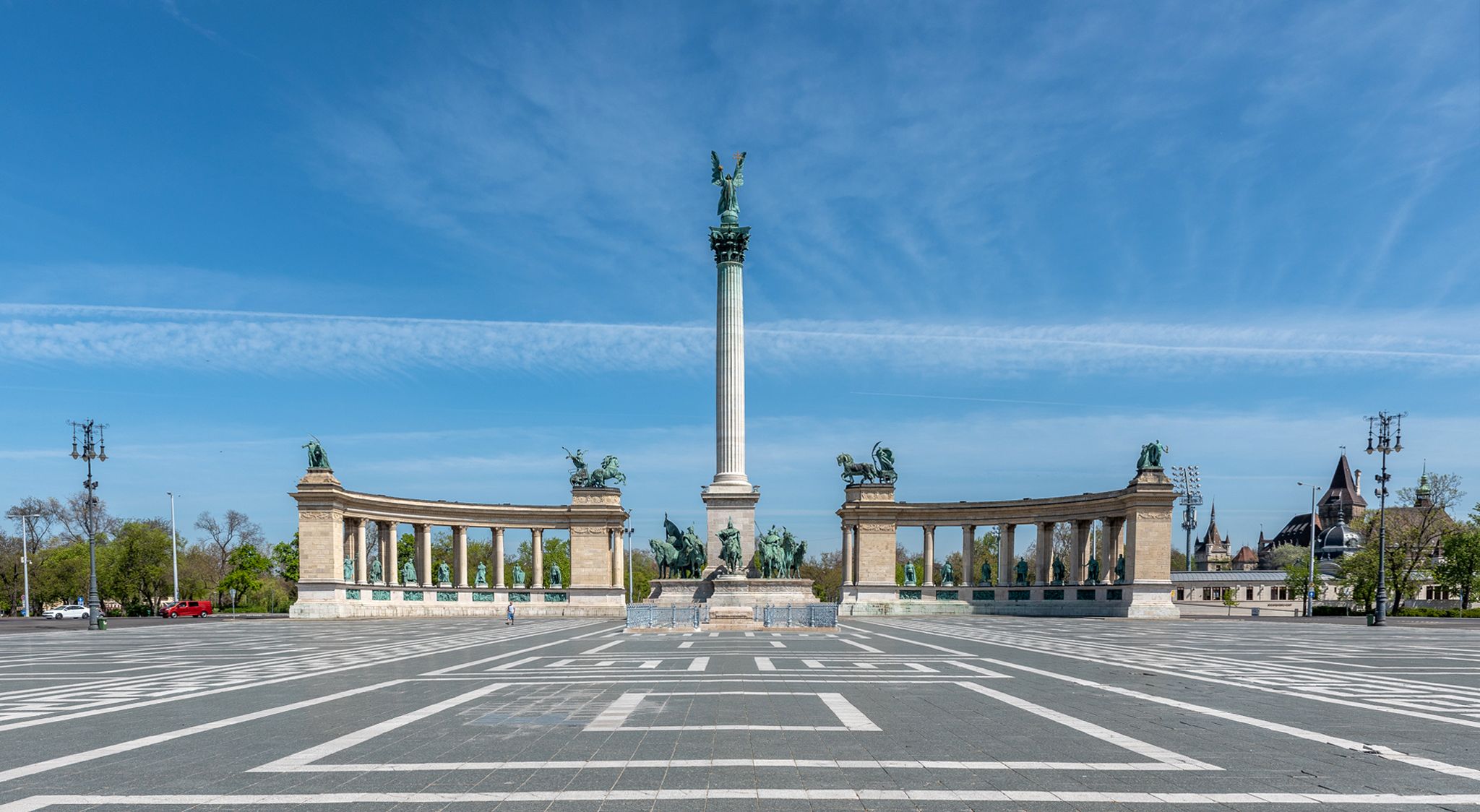
Heroes' Square (Photo: Balázs Both/pestbuda.hu)
Hungarian National Museum
The Hungarian National Museum is one of the most important and richest collections of Hungarian history and art by Hungarian and from the Carpathian Basin. Its building was built in 1847 according to the plans of Mihály Pollack. On 15 March 1848, an assembly held in the Museum Garden proclaimed the revolutionary ideas that created modern Hungary. The lower and upper houses of the Parliament consulted several times in its ballroom. Between 1861 and 1944, great figures lay in state in its halls, such as László Teleki, Lajos Kossuth, Endre Ady and József Bem.
The Hungarian National Museum in the 1880s (Source: FSZEK Budapest Collection, photographed by György Klösz)
Plots 298, 300 and 301 of the Rákoskeresztúr New Public Cemetery
The “cemetery memorial” of Hungarian history after 1945, where the earthly remains of politicians, soldiers, public figures, workers, students and peasants convicted and executed on false charges in lawsuits after 1945 and 1956 rest. The park of mourning is a symbolic space for protests for national cohesion and against communist repression. It was the site of silent demonstrations against the existing power before 1990, reminiscent of 1956. Today, it is one of the most important venues for the celebrations commemorating the 1956 Revolution and the War of Independence.
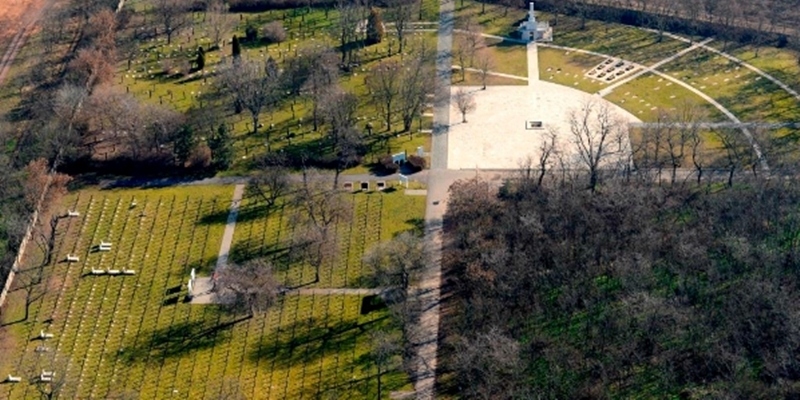
Rákoskeresztúri Újköztemető 301. parcella
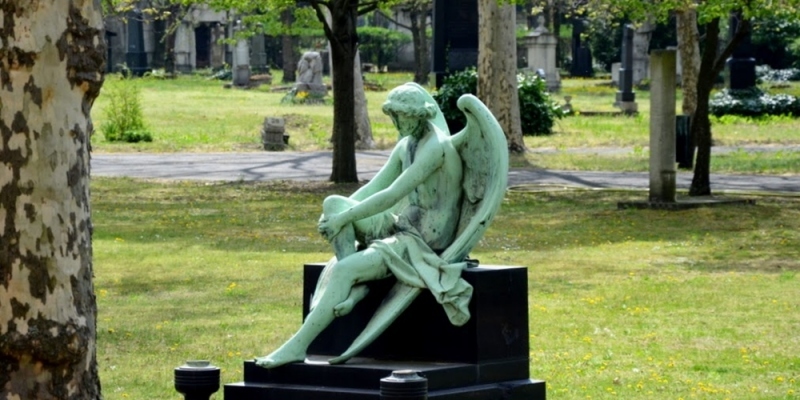
Rákoskeresztúr New Public Cemetery (Photo: pestbuda.hu)
Castle District
It is the oldest and most monumental part of the country's capital, a World Heritage Site. From 1247, when not under foreign occupations, it was one of the administrative and political centres of the Hungarian state. Until the middle of the 19th century, the palaces of the rulers and the head of state, the residence of the Prime Minister's Office and some ministries, as well as the embassies of many nations, were within the castle walls.
Today, it can be considered the cultural and representational centre of the Hungarian state, including the Offices of the President of the Republic, Matthias Church, the National Széchényi Library in the Royal Palace of Buda Castle alongside the Hungarian National Gallery.
Detailed agendas can be found at emlekhelynapja.hu.
Source: emlekhelynapja.hu, MTI
Cover photo: The Buda Castle District will also be a venue of Memorial Day (Photo: Balázs Both/pestbuda.hu)

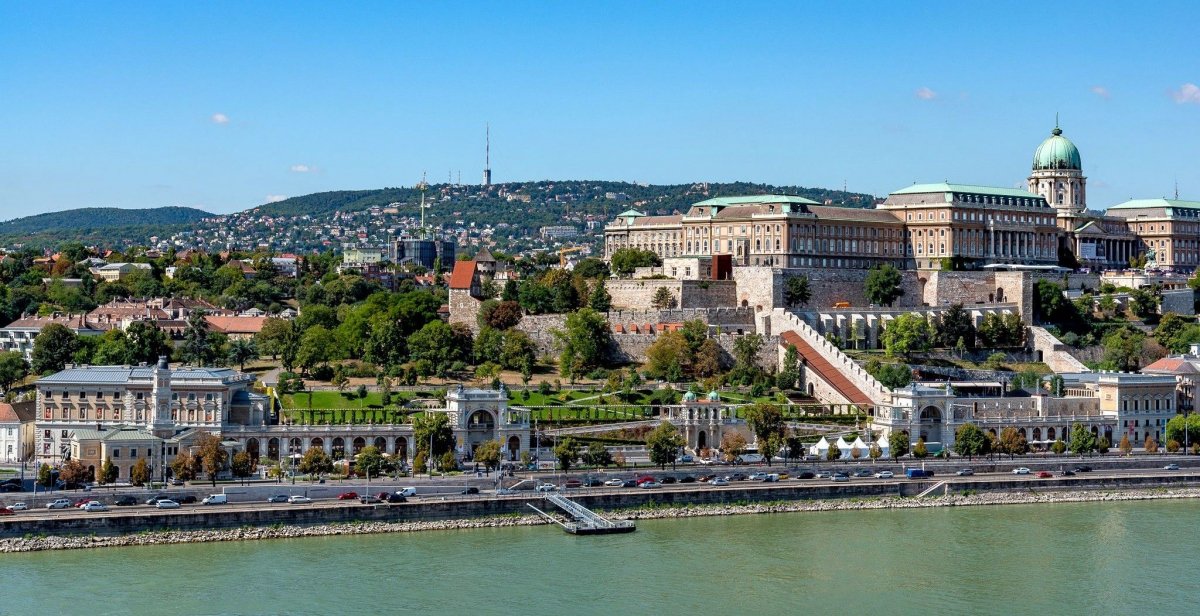




































Hozzászólások
Log in or register to comment!
Login Registration